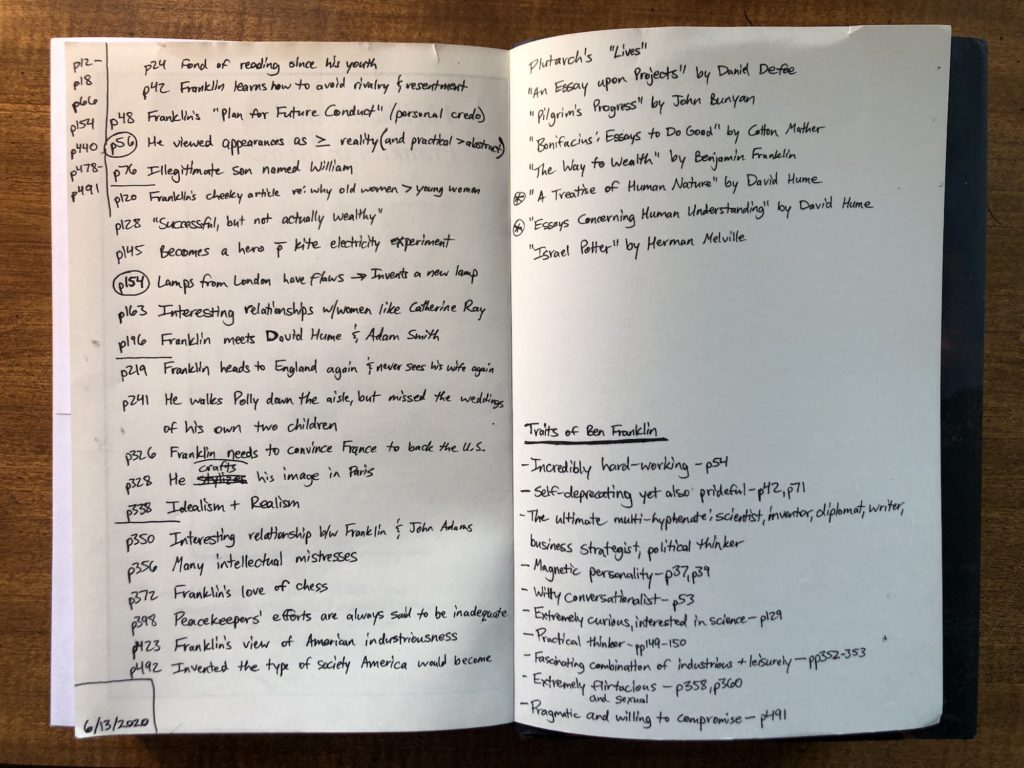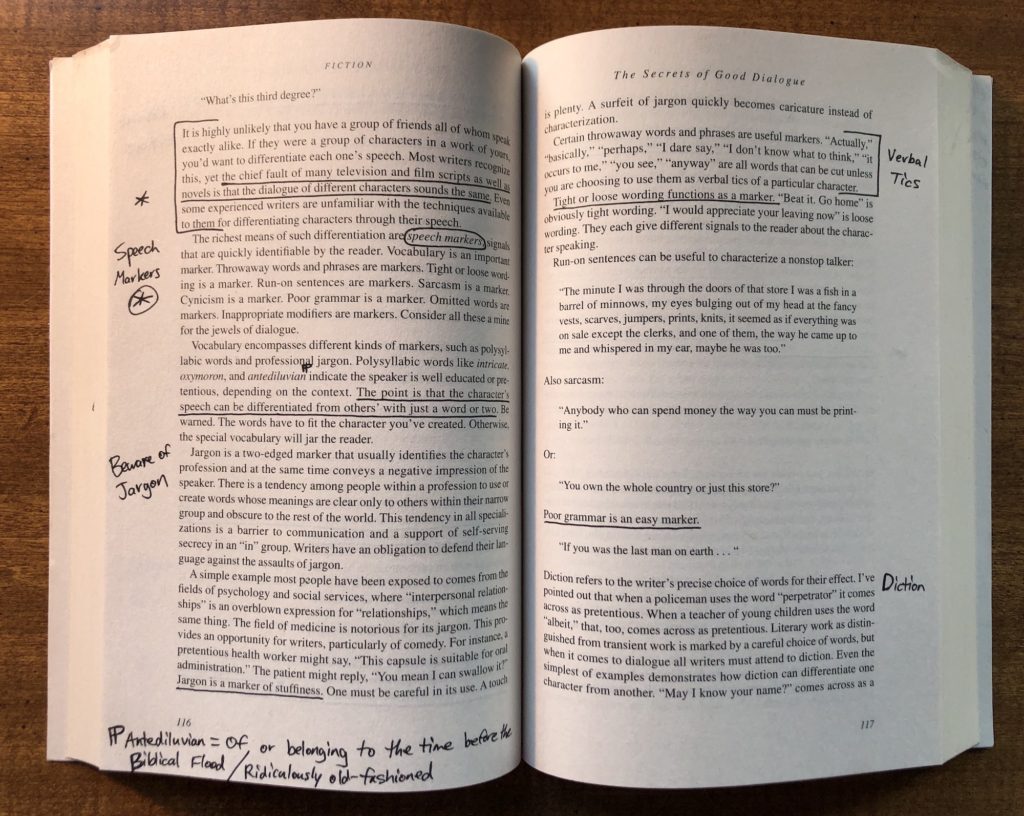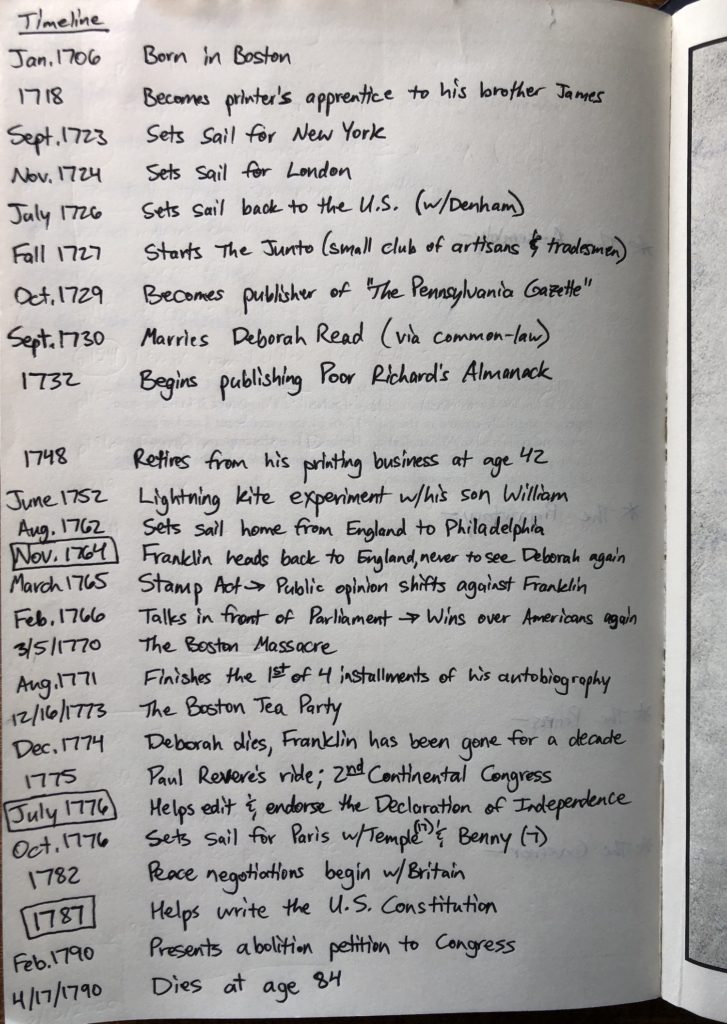Use This Simple Technique to Get More Out of Every Book You Read

For the past ten years, I’ve been experimenting with tactics to record and remember key takeaways from the 650 books I’ve read in that timespan.
With how much I read, it’s important for me to remember what I’ve learned and put those lessons into practice, so I’ve been developing my own system of advanced “marginalia” (i.e., writing in the margins).
The core of the system is extremely simple, but I’ll share pictures along the way to show how you can maximize each step.
Here are the three steps of my “SUB” system (Star, Underline, Back Cover):
- Star key passages to quickly find them later
- Underline essential quotes and ideas on each page
- Record your biggest takeaways inside the book’s back cover
Let’s take a quick look at each step.
1. Star key passages to quickly find them later
As I’m reading a book, I place an asterisk (*) next to key passages to help me track down those ideas later when I riffle through the book.
For passages that seem really important, I circle the asterisk so I can find the material even faster. The circled asterisks are generally the items that I jot down in the back cover of the book (explained in step #3 below).
Here’s an example of a typical page of one of my books. You’ll notice a couple of stars and margin notes that will help me find those ideas quickly later.

2. Underline essential quotes and ideas on each page
As I read, I ask myself the question: “If I was to go back and skim-read this book, what few sentences on this page would I need to read to understand the core concept or the essential elements of the plot?” The answer to that question determines what parts I underline.
Underlining or highlighting is not an exact science. Different ideas and quotes resonate with different people. Sometimes my wife reads a book that I’ve read and marked up, and she’s surprised by the types of things I underlined. They don’t make sense to her, and they’re not really supposed to. Your notes are for you — not for anyone else.
While I read, I also take note of new words I don’t know. For example, the picture above is from the book Stein on Writing by Sol Stein. Page 116 of that book contained the word “antediluvian,” which I had never heard before, so I looked it up and jotted the definition on the bottom of the page. I’ve been using a backward pilcrow (the paragraph symbol) to designate new vocab words, but you can use any symbol you’d like.
3. Record your biggest takeaways inside the book’s back cover
This is the most important part of my marginalia system. Years ago, I realized that if I wanted to thumb back through an old book to find a quote or concept, I had to scan through every page to find what I wanted.
That seemed ridiculous, and I knew there must be a better way to summarize what I had learned and where I could find it in the book, so I began using the inside back cover of every book to record my primary takeaways.
Here’s an example from Walter Isaacson’s biography Benjamin Franklin:

If you look closely, you’ll notice several different types of notes in the image above. Here’s a description of those notes from left to right:
- Favorite Quotes — The upper left corner includes page numbers of a few of the author’s best quotes.
- Key Takeaways — The main section on the left page includes a page number alongside each core insight from the book. I usually choose about 15–25 main takeaways for every book.
- Date Finished — The bottom left corner shows the date I finished reading the book. If and when I re-read this book, I’ll write the re-read date as well.
- Book Recommendations — Most authors are insatiable readers. Many writers consume 10–50 books while researching a book, and they generally reference those books throughout the text, along with sprinkling in some of their other favorite books. I write the author’s recommendations in the upper right corner of the back cover. If I want to dive deeper into some topic from the book, those recommendations give me a great starting point.
- Personality/Character Traits — In the bottom right corner, I jotted down a few things I learned about Benjamin Franklin as a person: what made him successful, what he struggled with, etc. I’ve begun to write lists like this in biographies, and it’s fascinating to see the common character traits between successful people in diverse fields (curiosity, work ethic, etc.).
The types of things I write in the back cover of a book differ based upon the type of book I’m reading. For example, the last bullet point above about Personality/Character Traits wouldn’t make sense in a book about economics, psychology, or leadership. For those types of books, I jot down other notes, like what I plan to apply from that book to my life.
I also write notes in fictional books. I’ve found that the notes help me follow along with the plot and remember what happened in the story. For fiction, I usually write a character list on one of the pages of the book’s back cover.
Depending upon the type of book, I’ve also begun to write timelines in the back of some books. I primarily do this in history books, biographies, memoirs, and even some business books. Here’s a picture of my timeline from the Benjamin Franklin biography:

Conclusion
I used to treat my own books no differently than a library book. It felt wrong to deflower the pages with my scribbles and underlines, so each margin remained milky white. Then I realized that what made a book special was not its words, but what those words sparked inside me: ideas, inspiration, and action.
Writing notes in a book enables you to engage in a form of co-creation with the author. Marginalia helps you transition from idea to inspiration to action. It helps you remember what you’ve learned from any book and apply it to your life after you turn the final page.
Step up your reading game by using the SUB system (Star, Underline, Back Cover) of advanced marginalia:
- Star key passages to quickly find them later
- Underline essential quotes and ideas on each page
- Record your biggest takeaways inside the book’s back cover
It’s a simple system that can be used in powerful ways. Give it a shot.
Want to become a powerful learner?
Sign up to get my exclusive
10-page guide for leaders and learners.



